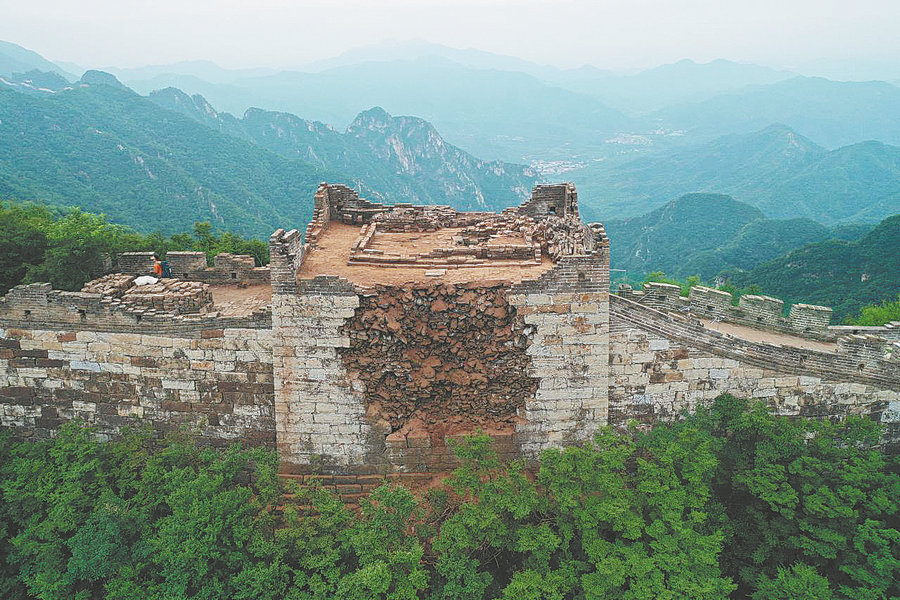

Multidimensional mission
Beijing is among the first cities to launch archaeological expeditions at the Ming Dynasty sections of the Great Wall to facilitate restoration work. Earlier this year, Shang had led an excavation project on the Dazhuangke section in Yanqing district.
"Our mission is to understand what ails the Great Wall and how it can be saved. Archaeological evidence tells us how various sections can be restored," he says.
There was much debate on whether some sections should be given a refreshed look after restoration, considering the monumental influence the Great Wall has on Chinese people's psychological strength, or whether the broken facades should be retained to reflect the history they endured.
In a conservation advisory, released by the National Cultural Heritage Administration in 2019, the Great Wall was described as "a heritage made of ancient architecture and ruins". Hence, the focus became restoration instead of renovation.
For Shang, the mission is multidimensional restoration of the Great Wall. "Archaeological findings can offer fundamental clues for virtual restoration work, which means people can see what the Great Wall originally looked like on digital platforms," he says.
He is the only archaeologist at the Beijing institute who's entirely focusing on the Great Wall. He had visited the Badaling section, which is popular with tourists, as a child and began amateur research while in middle school. "It was like wanting to watch an entire television series after seeing a thrilling trailer. In college, I was an archaeology major and finally, it became my career."
Shang has covered on foot the 1,500-km-plus stretch of the Great Wall built during the Ming Dynasty. "I may be old school when it comes to studying history, but I know digital methods are necessary to further our conservation efforts, especially if we want the young generation to contribute," he says.
In June, a WeChat mini-program coproduced by the China Foundation for Cultural Heritage Conservation and internet giant Tencent went online. Shang played a key role in making Great Wall E-tour a reality.
Around 50,000 high-definition pictures of the Xifengkou section in Hebei province have been used to develop the program. A virtual expedition allows enthusiasts to contribute to restoration efforts.
"The experience is immersive. People understand the need to protect the Great Wall and learn to appreciate the achievements of archaeological teams," says Liu Yuzhu, head of the heritage foundation.
During wars throughout history, smoke frequently billowed out of the beacon towers. In times of peace, these structures offered an insight into the society.
"Development of regions along the Great Wall through different dynasties showed how ancient Chinese people managed agrarian and pastoral land," Ge Chengyong, a professor at China Academy of Cultural Heritage, writes in an article. "The Great Wall largely promoted economic exchange in the frontier area and communication among various ethnic groups. It gave an impetus to a united Chinese civilization, rooted in diversity."
Shang agrees and adds that their mission is to unravel every ounce of history hidden along the length of the Great Wall. "We will take it slow. We do not wish to make haste and commit a mistake that cannot be rectified. A colossal archaeological database will be formed. Jiankou is only a start."